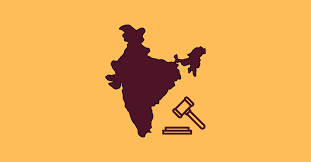INTRODUCTION
Intra vires the power of the parliament empowers it to amend any part and provision of the constitution by the virtue of article 368 of the Indian constitution. Article 368 is contained in part –xx of the Indian constitution. This article also contained a certain way of amending of existing provision of the constitution that is to be amended and these are:
- rephrasing by a simple majority
- rephrasing by a special majority
- rephrasing by special majority with state ratification
The need and the demand of the people are changing gradually and as the needs are changing, it becomes necessary to change the existing law that has become redundant and obsolete. The main purpose of article 368 is to run parallel with the change that is accompanying the need and the demand for the not so archaic people.
DOCTRINE OF BASIC STRUCTURE: THE CONCEPT:
It is asserted that the concept of the doctrine of basic structure has evolved from the case of Keshavananda Bharti v. The State of Kerala. This concept put a limitation in the unrestrained power of the parliament where the parliament can even alter the fundamental right[i] under part iii of the constitution in the absence of this asserted doctrine of basic structure[ii]
This judge-made doctrine basically deals with the inherent constitutional power of the parliament where the parliament can amend any provision of the constitution except the provision that falls under the doctrine of basic structure[iii]. Keshavananda Bharti’s case included a certain provision under the doctrine of basic structure like a fundamental right. At present, there are many components under the ambit of basic structure and these are:
- preamble[iv]
- The supremacy of the constitution.
- Equality of status and opportunity.
- Essential features of individual freedoms.
- The mandate to build a welfare state
- Maintenance of the unity and integrity of India.
- Maintenance of the separation of powers.
- Maintenance of the unity and integrity of India
- The sovereignty of the country
- The federal character of the constitution
- To build a welfare state
- A sovereign democratic republic.
- Liberty of thought, expression, belief, faith, and worship.
- The provision of social, economic, and political justice.
- Essential features of individual freedoms.
- Equality of status and opportunity.
HISTORICAL BACKGROUND:
In India, this doctrine comes into existence from the case “Golakhnath v. the state of Punjab”. in this case the argument was put up on “implied limitation on the amending power by the parliament “ by the virtue of article 368 of the Indian constitution. In this case, it was held that parliament could not curtail any of the fundamental rights of the constitution.
The question of amending the power of the parliament was further raised in the case keshavananda Bharti v. state of Kerala. There was a real conundrum on the various provisions of the constitution because the doctrine of basic structure as it stands today, simply was not in existence then.
MAIN PROVISION OF THE CASE:
The crux of the case:
In this case, the extent of the parliament’s power on up to how it can amend the constitution was dealt with. To boil down the point, the court also reviewed the golaknath v. state of Punjab case.
This case passed the precedent judgment where it was held that –“Parliament cannot amend fundamental rights”.Hence essential feature doctrine and concept of basic structure was expounded in this case.
Facts of the case:
Keshavananda Bharti, the plaintiff in this case challenged the land reforms law that had been brought about by the government. The reform was for the restriction on the management of the property by the people and as a consequence, Keshavananda Bharti filed a case to get back the right to manage the property.
JUDGMENT OF THE CASE:
As already discussed, this case passed the precedent judgment where it was held that –“Parliament cannot amend fundamental rights”. For this reason, this case is also known as a fundamental right case.
CONCLUSION
This doctrine protects our basic rights and every act of the Parliament is now subject to this doctrine and puts a full stop to the unconstitutional Constitutional amendments game of the Parliament.
[i]in the present time fundamental right under part iii of the Indian constitution (from article 14 to 32 ) is the part of basic structure.
[ii]From the case keshavananda bharti v. state of Kerala – the case that saved Indian democracy –“The 703-page judgment revealed a sharply divided court and, by a wafer-thin majority of 7:6, it was held that Parliament could amend any part of the Constitution so long as it did not alter or amend “the basic structure or essential features of the Constitution.” This was the inherent and implied limitation on the amending power of Parliament”.
[iii]“ The doctrine of ‘basic structure’ is considered the most potent tool in the hands of the Indian
judiciary to maintain the balance of power, the checks and balances that are required for a
smooth functioning of a democracy. This doctrine has altered the course of Indian Constitutional law jurisprudence.”
Image Source
Author: Ananya Jha


